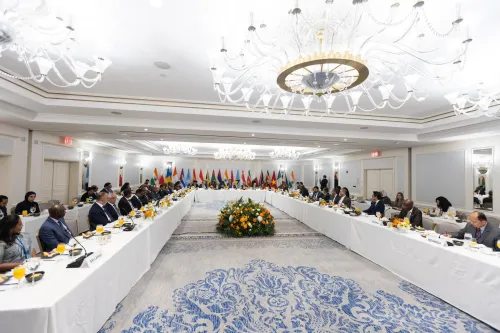Is there room for a repo rate cut in December according to RBI Governor?

Synopsis
Key Takeaways
- Potential for repo rate cut to boost growth in December.
- Favorable macroeconomic indicators support the decision.
- Inflation has declined, providing leeway for policy adjustments.
- RBI's dual mandate includes price stability and economic growth.
- Global financial firms anticipate a 25 bps reduction in repo rate.
Mumbai, Nov 24 (NationPress) Reserve Bank of India (RBI) Governor Sanjay Malhotra indicated on Monday that there exists potential for a repo rate reduction aimed at stimulating growth during the upcoming monetary policy review in December, supported by favorable macroeconomic signals.
After the previous monetary policy committee meeting in October, Malhotra also noted that the decline in inflation has created an opportunity for the RBI to prioritize growth.
He stated, "In October, the Monetary Policy Committee (MPC) acknowledged the possibility of further rate cuts. The macroeconomic data received since then has not diminished that possibility. While there is potential for another rate cut, the ultimate decision lies with the MPC in December," Malhotra shared in an interview with Zee Business.
He reiterated that the central bank operates under two primary objectives: ensuring price stability and fostering growth.
“We do not take an aggressive stance on growth, nor do we adopt a defensive posture,” Malhotra commented.
The monetary policy committee, led by the RBI Governor, had kept the repo rate steady during the last two reviews in August and October to manage inflation effectively.
Prior to this, the RBI had implemented a 100 bps cut in the repo rate, lowering it from 6.5 percent to 5.5 percent between February and June.
The RBI has also revised its headline CPI inflation forecast for FY26 down to 2.6 percent from 3.1 percent, providing more leeway to concentrate on growth.
Additionally, the RBI upgraded its GDP forecast for FY26 from 6.5 percent to 6.8 percent year-on-year, although it warned of potential growth moderation in the first half of FY26 due to trade and tariff challenges.
Meanwhile, global financial powerhouse Morgan Stanley recently predicted that the RBI will likely lower the repo rate by 25 basis points to 5.25 percent at the MPC meeting scheduled for early December 2025.
The report suggests that the RBI will adopt a cautious approach as it examines its three-pronged easing cycle concerning interest rates, liquidity conditions, and regulatory frameworks.
This strategy will allow the RBI to evaluate how these adjustments interact with domestic growth trends and inflation metrics before determining any future measures.









